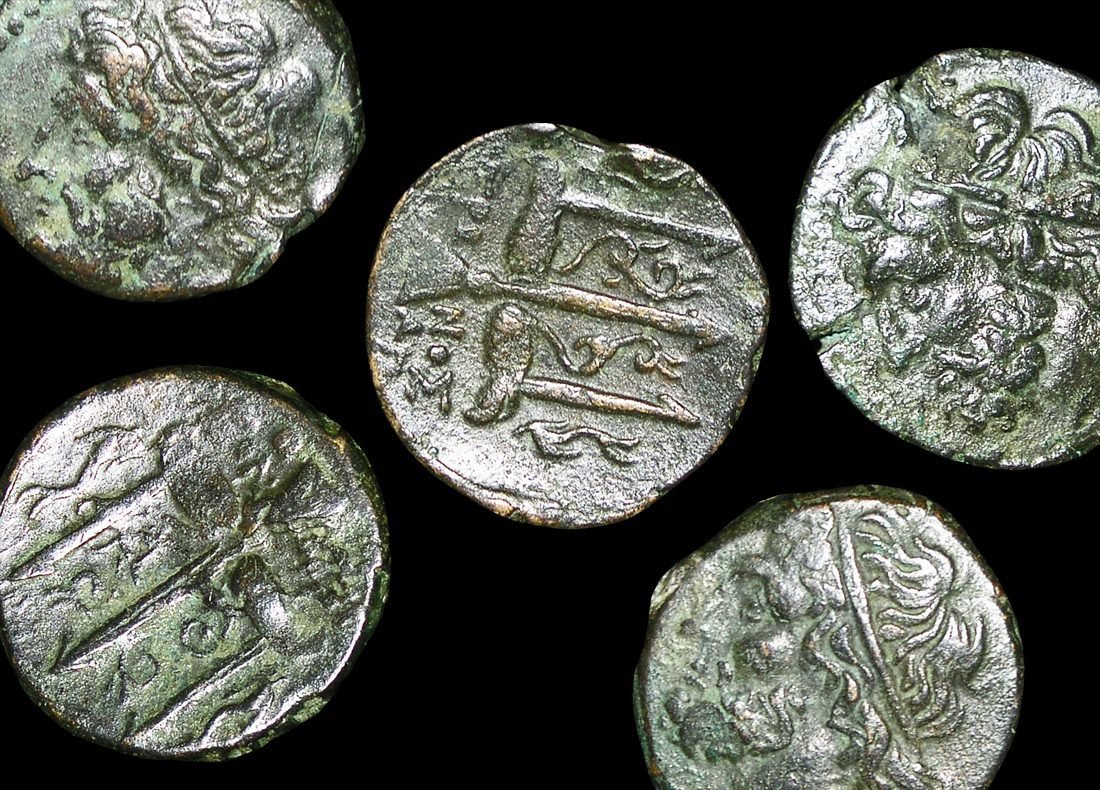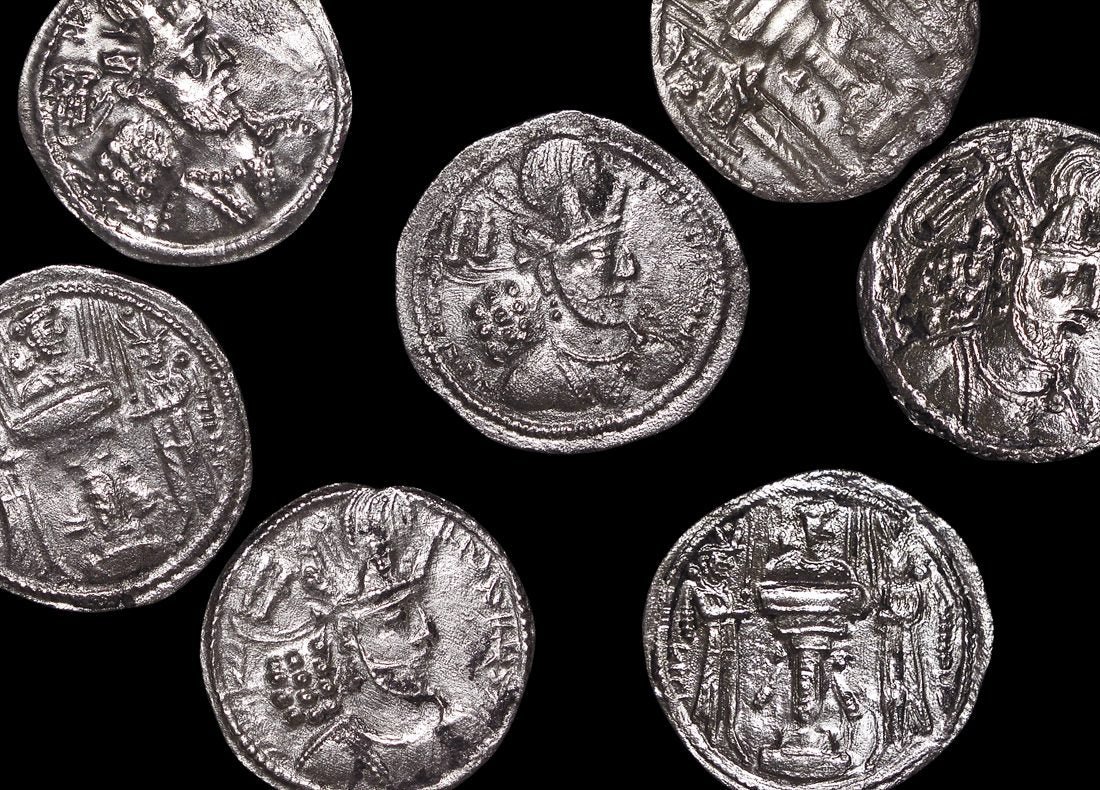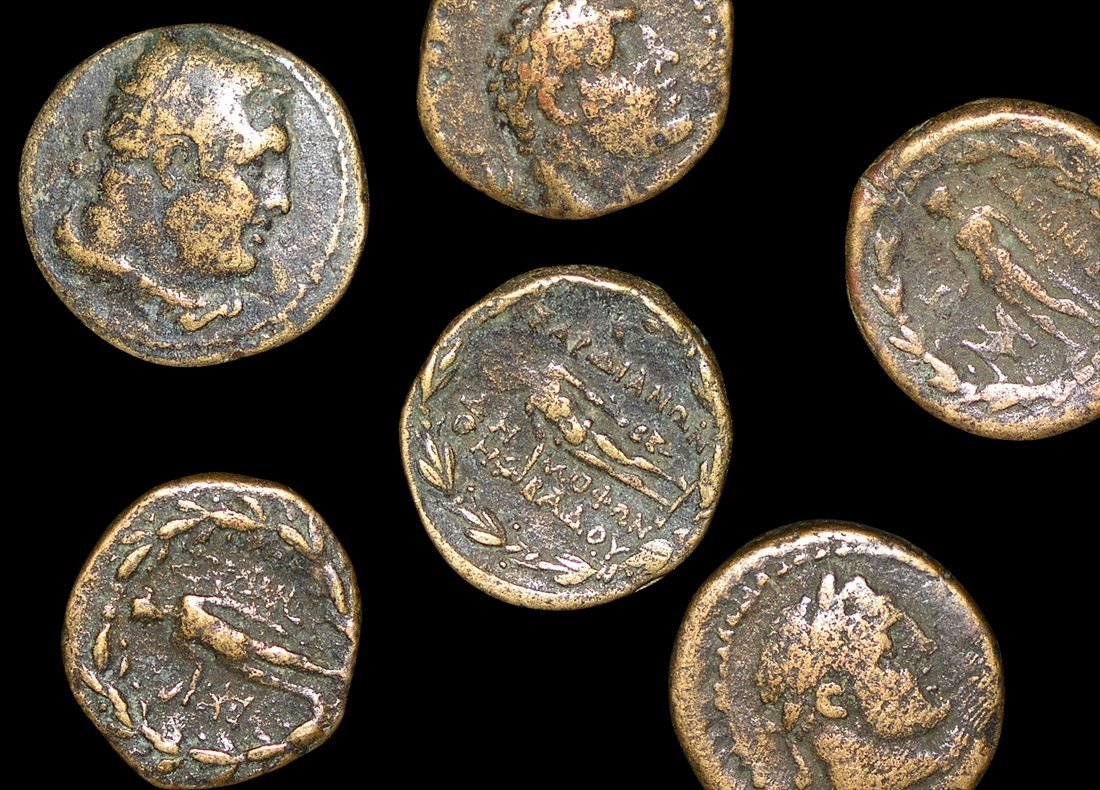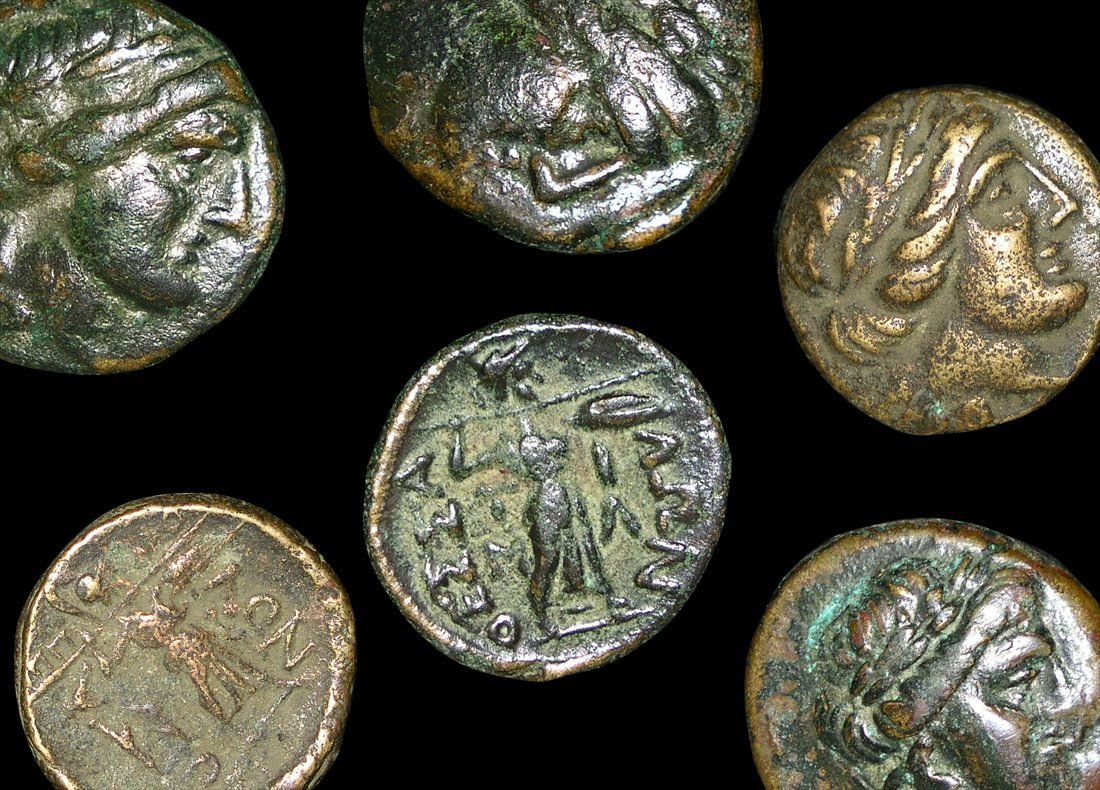 Image 1 of 1
Image 1 of 1


Bronze Unit from Syracuse under King Hieron II (about 2,300-2,200 years ago)
This bronze coin was issued in Syracuse, the most powerful Greek city-state in Sicily (modern Italy), during the reign of King Hieron II from 275-215 BCE. As a patron of arts and sciences in this major Mediterranean port city, Hieron's long and stable rule represented a golden age of prosperity for Syracuse between the Punic Wars.
Coin Description:
Front side: Typically depicts the head of King Hieron II wearing a royal diadem (headband), or possibly the head of Poseidon or a river god, reflecting Syracuse's identity as a maritime power.
Back side: Likely features a cavalry rider, a trident, or a dolphin—common Syracusan symbols—accompanied by the Greek inscription "ΒΑΣΙΛΕΟΣ ΙΕΡΩΝΟΣ" (of King Hieron).
Technical Details:
Material: Bronze
Denomination: Unit (basic bronze currency used for everyday local transactions)
Minting date/period: 275-215 BCE (approximately 2,300-2,200 years ago)
Condition: Varies by specimen
Historical Significance:
This coin was issued under the reign of Hieron II, who is famously remembered as the patron of Archimedes, antiquity's greatest scientist. When Hieron suspected a goldsmith of adulterating a golden crown, he tasked Archimedes with determining its purity without damaging it. This challenge led to Archimedes' discovery of the principle of displacement—reportedly realized while bathing—prompting his famous exclamation "Eureka!" Syracuse under Hieron's rule maintained independence through careful diplomacy between Rome and Carthage during their struggle for Mediterranean dominance.
This bronze coin was issued in Syracuse, the most powerful Greek city-state in Sicily (modern Italy), during the reign of King Hieron II from 275-215 BCE. As a patron of arts and sciences in this major Mediterranean port city, Hieron's long and stable rule represented a golden age of prosperity for Syracuse between the Punic Wars.
Coin Description:
Front side: Typically depicts the head of King Hieron II wearing a royal diadem (headband), or possibly the head of Poseidon or a river god, reflecting Syracuse's identity as a maritime power.
Back side: Likely features a cavalry rider, a trident, or a dolphin—common Syracusan symbols—accompanied by the Greek inscription "ΒΑΣΙΛΕΟΣ ΙΕΡΩΝΟΣ" (of King Hieron).
Technical Details:
Material: Bronze
Denomination: Unit (basic bronze currency used for everyday local transactions)
Minting date/period: 275-215 BCE (approximately 2,300-2,200 years ago)
Condition: Varies by specimen
Historical Significance:
This coin was issued under the reign of Hieron II, who is famously remembered as the patron of Archimedes, antiquity's greatest scientist. When Hieron suspected a goldsmith of adulterating a golden crown, he tasked Archimedes with determining its purity without damaging it. This challenge led to Archimedes' discovery of the principle of displacement—reportedly realized while bathing—prompting his famous exclamation "Eureka!" Syracuse under Hieron's rule maintained independence through careful diplomacy between Rome and Carthage during their struggle for Mediterranean dominance.






